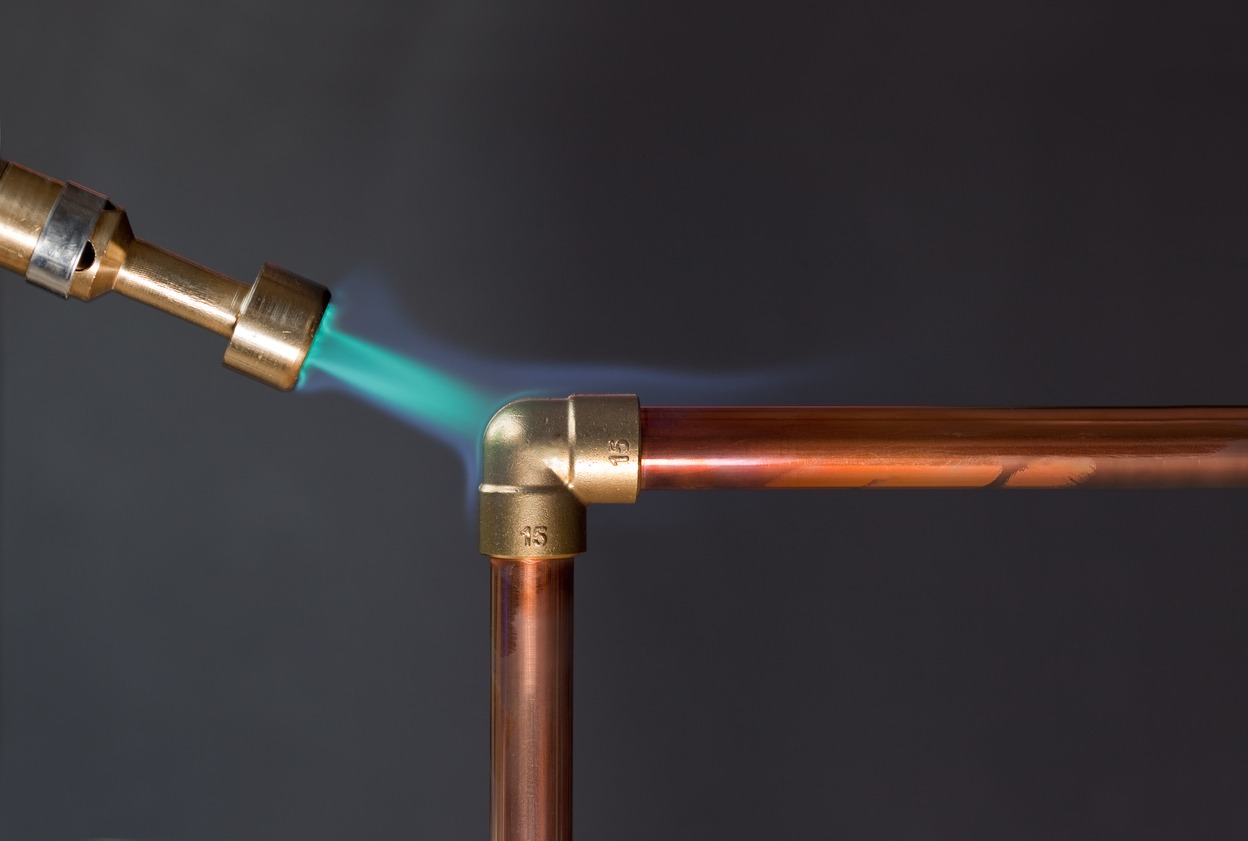Not everyone knows how to solder as plumbers can. The whole process can leave any DIY handyman apprehensive about trying to solder copper pipes together themselves. In which case, is it possible to effectively connect copper pipes without solder?
Continue reading to see if it’s possible to connect copper pipes without solder and what you can do about it!
What is Solder?
Solder is meant to create a permanent bond between metal pieces using fusible metal alloy. Metal alloys are ideal for solder since they have a lower melting point than the connecting pieces. As a result, it melts to wet parts of a joint, so the connecting pieces adhere and remain together after cooling.
What Are the Issues with Solder?
There are various reasons some folks have wanted to steer clear of having to solder. For the most part, the issues stem from how efficient the process truly is at doing the job. Soldering is a rather slow process that can eat up a lot of time. In addition, you can expect to be sweating as you’re soldering since it involves hot work.
Even doing the work itself, you risk having it done improperly. As a result, problems with your pipes can occur. For example, many have soldered a joint too much in a misguided attempt to combat leaking completely. However, it results in excess solder puddling inside the pipes. When this occurs, it can restrict water flow and form small metal balls that can break loose and damage faucet valves. Even overly cautious with soldering can result in the copper pipes connecting poorly, resulting in leaks.
Plus, some older copper pipes are unable to solder well if sufficient prep work isn’t done.
What Alternative Methods Exist?
Thankfully, soldering isn’t the only method you can take to connect copper pipes. You would be surprised that there are three ways you can do so!
Here are the ways you can down below:
Press Fit Connectors
The beauty behind this method is its convenience and efficiency. There is no need for heat and flame with press fit connectors. In addition, unlike soldering, you can perform it even when pipe systems are not completely dry.
However, its biggest hallmark feature is how quick it is to do compared to soldering.
Using a battery-powered press tool, it connects the pipes with a single button push by clamping the fitting onto it. This simple method only takes a matter of seconds to have connections. Press fit connectors have been quite reputable for being rather reliable in connecting copper pipes.
The technology within some press fit connectors can identify whether unpressed connections are present in pipe systems. Not something a regular soldering job can do!
Push Fit Connectors
Another option is considering push-fit connectors. These are known for containing a string of metal barbs and a neoprene rubber O-ring. How does that work exactly? Each fitting is pushed onto a pipe until it bottoms out, which creates a tight grip of the rubber O-ring around the pipe. In turn, it helps make a watertight connection.
This method is also another great way of not having to utilize open flames and is less of a safety risk. Like press fit connectors, this doesn’t need any additional tools, and pipes don’t need to be completely dry for connections to be made.
However, this method isn’t without some drawbacks.
Push-fit connectors can be susceptible to leak paths when a pipe does not go perfectly straight into a fitting.
Compression Fit Connectors
Typically, compression fit connectors are equipped with an outer nut and an inner ring made with brass or bronze. Compression fit connectors involve a wrench to tighten the outer nut while another wrench holds the fitting in place. The force from tightening the nut causes the inner ring to compress against the pipe, which helps to seal the connection indefinitely.
This method also doesn’t involve an open flame, but it might leave you wondering how much tightening is necessary. You can risk the compression nut cracking because it is overly tightened. However, if you don’t tighten it enough, you can also end up with potential leaks.
It is certainly possible to connect copper pipes without the need to solder. However, like any soldering issue, the other alternatives come with advantages and disadvantages. Ultimately, it comes down to what method seems more plausible for you to do and should get the job done to your satisfaction.


